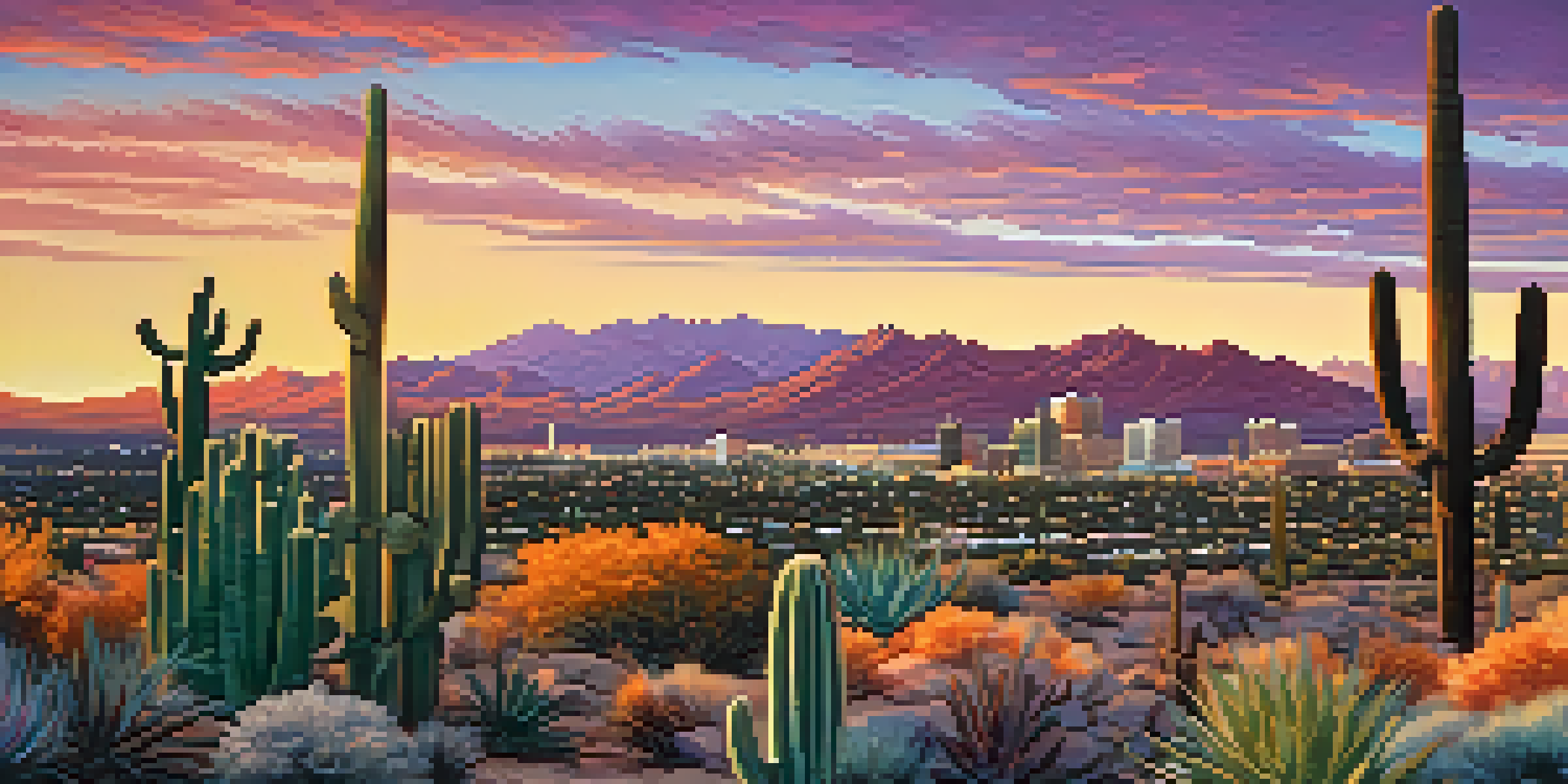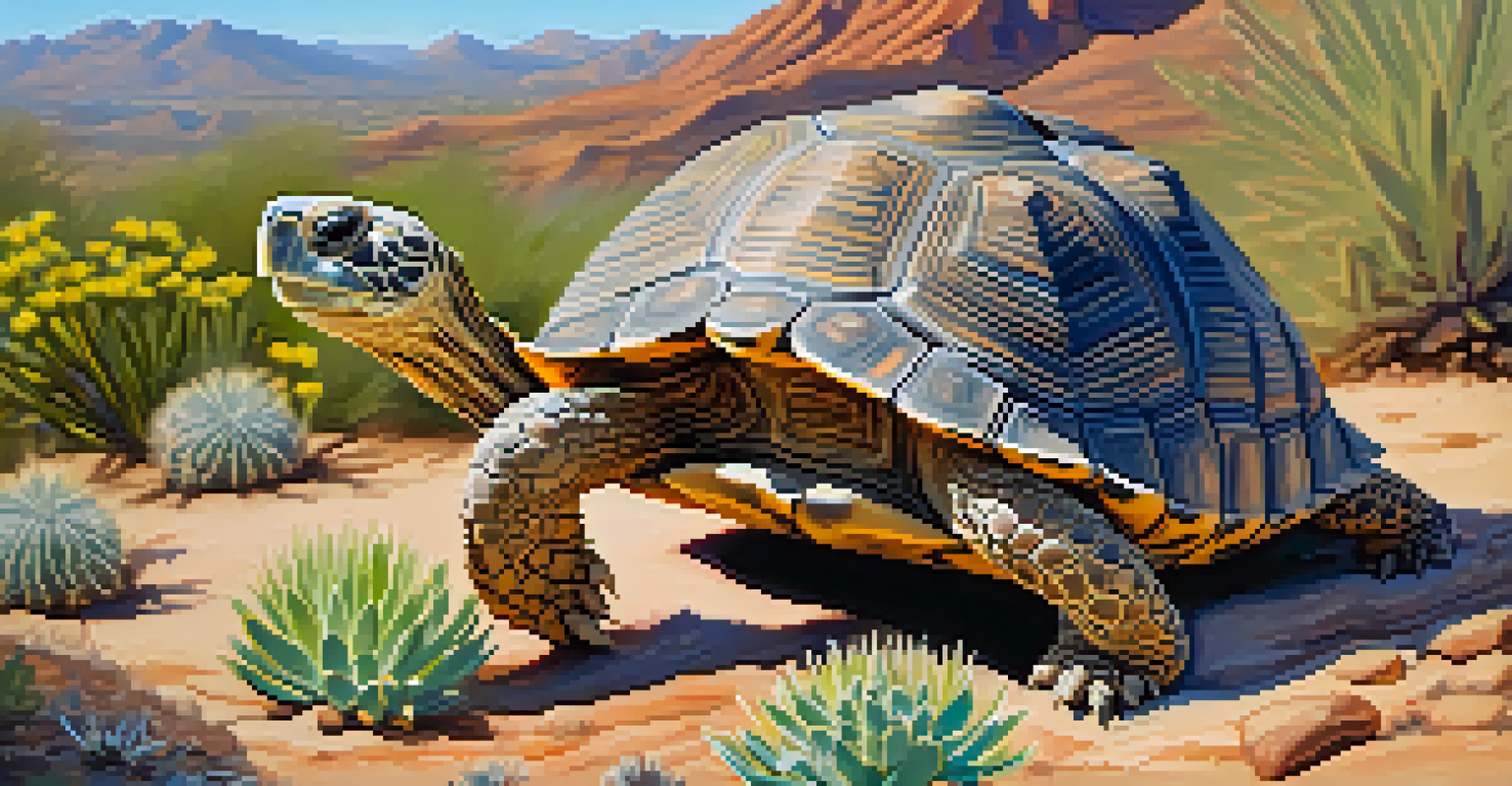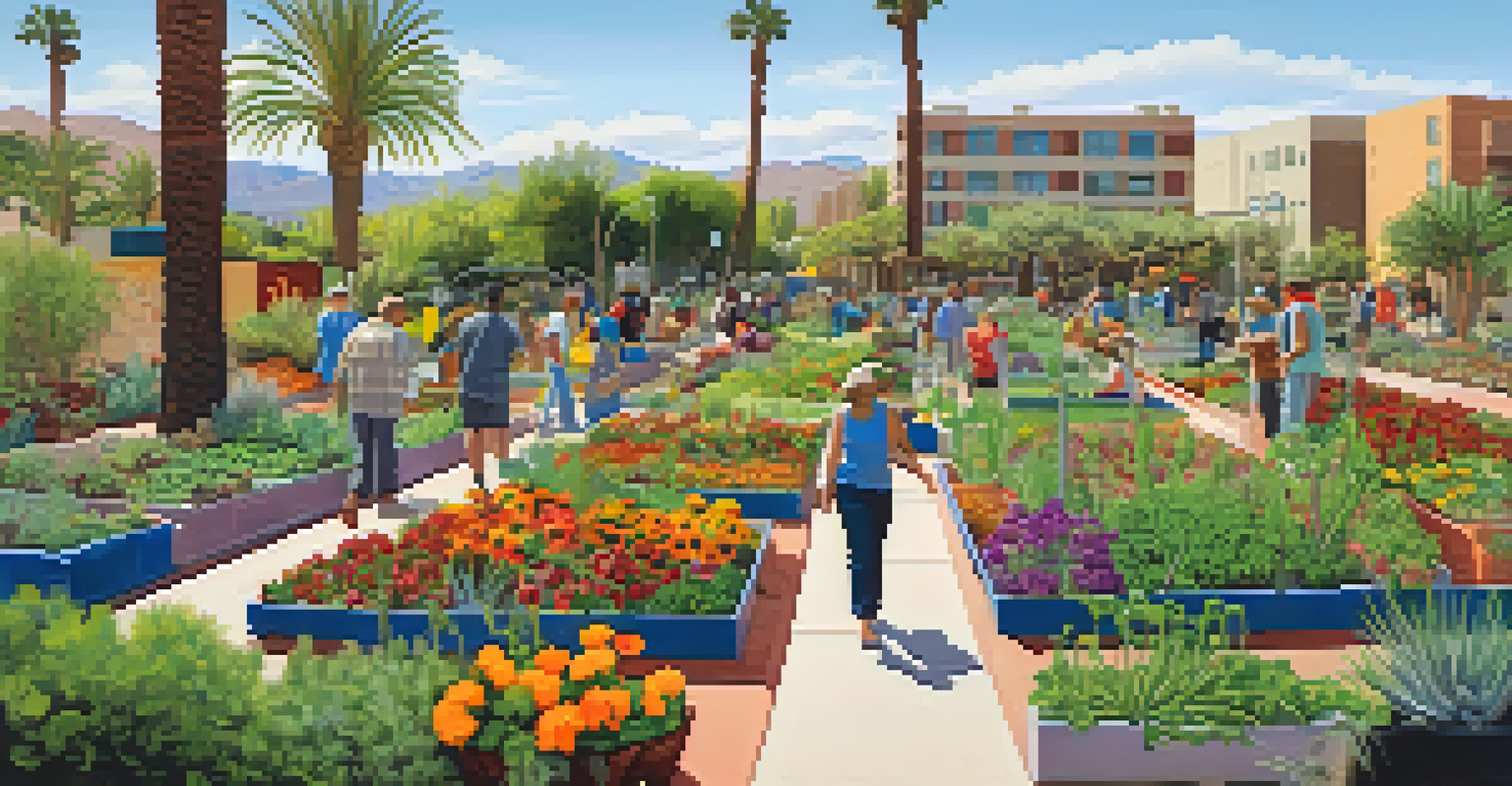Impact of Urbanization on Tucson's Wildlife Diversity

Understanding Urbanization and Its Scope in Tucson
Urbanization refers to the increasing number of people living in urban areas, leading to city expansion and development. In Tucson, this growth has been marked by a surge in population, infrastructure, and housing projects. As the urban landscape evolves, it transforms the natural habitats that wildlife rely on for survival.
The clearest way into the Universe is through a forest wilderness.
Over the past few decades, Tucson has witnessed significant urban sprawl, impacting not just the human population but also the fauna that calls this desert region home. The expansion often leads to deforestation, habitat fragmentation, and pollution, which can drastically alter local ecosystems. Understanding this context is crucial as we delve into the effects on wildlife diversity.
Related Resource
As we explore the impact of urbanization on Tucson's wildlife, it’s important to acknowledge that every change in land use can ripple through the ecosystem. The challenge lies in balancing human development with the preservation of the natural world that supports various species.
Key Species Affected by Urban Growth in Tucson
Tucson is home to a variety of wildlife, including species like the desert tortoise and the Gila monster, both of which are impacted by urbanization. As urban areas expand, these animals face threats such as habitat loss and increased road mortality. Their natural habitats are often replaced with concrete structures, reducing their available living space.

Bird species, such as the cactus wren and the Gambel's quail, also experience shifts in their populations due to urban sprawl. With the loss of native vegetation and the introduction of non-native species, these birds may find it challenging to thrive in altered environments. The reduction in biodiversity can lead to a decline in their populations.
Urbanization Threatens Wildlife
The expansion of urban areas in Tucson leads to habitat loss, pollution, and increased human-wildlife conflicts, endangering local species.
Moreover, larger mammals like coyotes and bobcats are often forced into closer proximity with urban areas. While some may adapt to city life, their populations can become stressed due to factors like reduced prey availability and increased human-wildlife conflicts. Understanding these dynamics is vital for conservation efforts.
Effects of Habitat Fragmentation on Wildlife
Habitat fragmentation occurs when large habitats are broken into smaller, isolated patches, making it difficult for wildlife to move freely. In Tucson, roads, buildings, and fences can create barriers that disrupt animal migration patterns and access to resources. This fragmentation can lead to inbreeding and decreased genetic diversity among species.
In every walk with nature, one receives far more than he seeks.
For example, small populations of animals may find it increasingly difficult to find mates, leading to a decline in their overall health and resilience. Species that require larger territories for foraging or breeding, like mountain lions, are particularly vulnerable to these changes. They may find it challenging to navigate through urban areas safely.
Related Resource
The impact of fragmentation extends beyond individual species; it can also affect entire ecosystems. As wildlife struggles to adapt, the loss of certain species can lead to imbalances, which can further threaten the health of the environment. Thus, recognizing the consequences of habitat fragmentation is crucial for effective urban planning.
Impact of Pollution on Tucson's Wildlife
Pollution, a common byproduct of urbanization, poses significant risks to wildlife in Tucson. Air, water, and soil pollution can have detrimental effects on animal health, reproduction, and overall biodiversity. For instance, pollutants can accumulate in food sources, leading to toxic effects on species higher up the food chain.
In urban areas, noise pollution can disrupt communication among animals, particularly in species that rely on sound for mating or territory establishment. Birds and mammals alike may find it difficult to thrive in noisy environments, which can lead to decreased populations. The impact of pollution often extends beyond immediate health effects, as it can alter behavior and habitat use.
Importance of Green Spaces
Green spaces in urban areas provide essential habitats for wildlife, helping to maintain biodiversity and ecological balance amidst urban growth.
Moreover, light pollution can interfere with the natural behaviors of many nocturnal animals. For example, migratory birds may become disoriented and fail to reach their destinations due to artificial lighting. The interplay between urbanization and pollution highlights the urgent need for strategies to mitigate these effects on Tucson's wildlife.
The Role of Green Spaces in Urban Areas
Amidst urban growth, green spaces play a vital role in supporting wildlife diversity. Parks, gardens, and preserved natural areas provide essential habitats for various species, offering refuge from urban pressures. Tucson's existing green spaces can serve as crucial corridors that facilitate wildlife movement and help maintain ecological balance.
Creating and maintaining these green areas can enhance urban resilience against the challenges posed by urbanization. For example, community gardens not only beautify neighborhoods but also attract pollinators and other wildlife. By incorporating nature into urban planning, cities can foster environments where both people and wildlife can thrive.
Related Resource
Additionally, well-designed green spaces can help mitigate the effects of pollution and heat, contributing to a more sustainable urban ecosystem. Engaging the community in conservation efforts can further enhance the value of these spaces, making them integral to Tucson's urban landscape while promoting biodiversity.
Community Efforts to Preserve Wildlife Diversity
Community involvement is essential for preserving wildlife diversity amid urbanization in Tucson. Local organizations and volunteers play a pivotal role in conservation efforts, from habitat restoration projects to education programs. Engaging residents in wildlife monitoring and advocacy can foster a sense of stewardship and responsibility towards local ecosystems.
For instance, citizen science initiatives allow residents to contribute to the collection of data on local wildlife populations. This information can be invaluable for understanding the impacts of urbanization and shaping conservation policies. When communities work together, they can create a collective impact that significantly benefits wildlife.
Community Involvement is Key
Engaging local communities in conservation efforts fosters stewardship and can significantly benefit wildlife diversity in Tucson.
Moreover, educational programs in schools and community centers can raise awareness about the importance of biodiversity and the challenges posed by urbanization. By fostering a culture of respect for nature, Tucson's residents can help ensure that future generations inherit a rich and diverse wildlife legacy.
Strategies for Sustainable Urban Development
To mitigate the negative impacts of urbanization on wildlife, Tucson can adopt sustainable urban development strategies. Smart growth principles emphasize compact, efficient land use, which can reduce habitat loss and fragmentation. By encouraging mixed-use developments and preserving natural areas, cities can create a more balanced environment for both people and wildlife.
Incorporating wildlife corridors and greenways into urban planning can enhance connectivity between habitats, allowing animals to move freely across the landscape. These corridors not only support wildlife but also provide recreational opportunities for residents, promoting a healthy lifestyle. Thoughtful integration of nature into urban design can yield significant ecological benefits.

Additionally, policies that prioritize environmental impact assessments can help identify potential threats to wildlife during development projects. By considering the ecological consequences of urban growth, Tucson can make informed decisions that protect its unique wildlife diversity while accommodating its growing population.